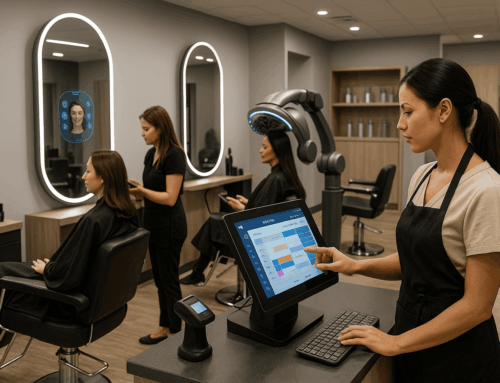Running a furniture store can be incredibly rewarding, but it also comes with unique challenges. If you’ve noticed declining sales, dwindling foot traffic, or general stagnation, it’s critical to act quickly and decisively. This ultimate guide will help you identify the internal and external factors affecting your business and outline proven strategies to get your store back on the path to profitability. We’ll also weave in how upgrading your point of sale software can streamline operations and sharpen your recovery efforts.
Diagnosing the Problems
Internal Factors
1. Employee Performance and Accountability
Your employees are the face of your furniture store. Are they welcoming? Knowledgeable? Proactive?
- Mystery Shopping: Hire a secret shopper to evaluate customer interactions.
- Customer Surveys: Send post-purchase surveys to gauge customer satisfaction.
- Sales Metrics: Use your point of sale software to track employee performance metrics — such as average sale value, items per sale, and warranty or add-on sales.
Tip: A well-configured POS system can generate individual sales reports that highlight your top and bottom performers.
2. Mistakes and Employee Theft at Checkout
Mistakes in discounting, incorrect pricing, and even outright theft can silently drain profits.
- Audit POS Transactions: Regularly review unusual refunds, voided sales, and manual discounts.
- Permission Controls: Update your point of sale software to ensure only managers can override prices or process returns.
- Inventory Management: Conduct regular spot checks against your POS inventory system.
3. Customer Service Quality
Furniture is a relationship-based sale. Long delivery times, poor communication, or aggressive sales tactics can sour a transaction.
- Training Sessions: Regularly coach your team on consultative selling.
- POS CRM Features: Use your POS system’s customer database to track customer purchases, preferences, and communications.
4. Marketing and Promotions
Are you relying solely on word-of-mouth or old advertising methods?
- Digital Advertising: Invest in Facebook and Instagram ads targeting people within a 15-mile radius.
- Email Campaigns: Run monthly promotions tied to holidays, seasons, or financing options.
- Loyalty Programs: Use your point of sale software to set up a loyalty program offering discounts or rewards.
5. Inventory Relevance
Furniture trends change. If your inventory feels outdated, customers will move on.
- Data-Driven Decisions: Use POS reports to identify fast-selling and slow-moving inventory.
- Market Research: Visit competitors, browse Pinterest and Instagram trends, and update your collections accordingly.
External Factors
1. Local Competition Analysis
Your competitors are your best teachers.
- Visit Competitors: Observe pricing, merchandising, customer experience.
- Analyze Online Presence: Check their Google Reviews, social media following, and website offerings.
- Market Positioning: Identify what they’re doing well and create a plan to offer something better or different.
2. Foot Traffic Decline
A drop in local foot traffic can devastate sales, especially for high-touch purchases like furniture.
- Google Maps Data: Some local business profiles show traffic trends.
- In-Store Counters: Install simple foot traffic counters at the door.
- Community Involvement: Sponsor local events, host in-store events, or collaborate with nearby businesses to drive traffic.
3. Online Store Traffic Decline
If you have an online catalog or e-commerce component, monitor it closely.
- Google Analytics: Look for trends in visitor numbers, time on site, bounce rates, and conversions.
- Local SEO: Optimize your website with keywords like “Furniture Store Near [City]” and use Google My Business properly.
- E-Commerce POS Integration: If possible, sync your point of sale software with your website for accurate inventory and pricing.
4. Economic Factors
Not all downturns are internal.
- Interest Rates: Higher rates make financing furniture purchases harder.
- Housing Market: Fewer home sales = fewer furniture buyers.
- Adaptation: Offer more financing options, smaller ticket items, and flexible payment plans.
Fictional Case Study: Timber & Trends Furniture
In 2023, Timber & Trends, a mid-sized furniture store in Ohio, was losing nearly $30,000 per month. Customers had dwindled, stock was aging, and employees were disengaged.
What They Did:
- Introduced a new POS system that tracked sales per associate.
- Cleaned up inventory using detailed POS reports to identify dead stock.
- Ran community events every weekend and boosted their Instagram presence.
- Added interest-free financing on major purchases.
Result:
- Sales grew by 47% in 6 months.
- Customer retention increased by 61%.
- Employees received sales-based bonuses and showed renewed energy.
Their POS software became the nerve center for accountability and decision-making.
Action Plan: Step-by-Step Furniture Store Recovery
Step 1: Set Clear Recovery Goals
- Increase foot traffic by 20% in 6 months.
- Improve average transaction value by 15%.
- Raise customer satisfaction score to 90%.
Step 2: Revamp Employee Management
- Implement sales-based incentives.
- Weekly 15-minute sales coaching huddles.
- POS access controls tightened to prevent fraud.
Step 3: Fresh Marketing Strategy
- Launch grand reopening events.
- Push financing options on every channel.
- Social media giveaways or competitions.
Step 4: Refine Product Mix
- Conduct a “dead inventory” sale.
- Introduce new, trendy furniture lines based on social media trends.
- Feature limited edition collections to create urgency.
Step 5: Upgrade Your Tools
- Invest in or update your point of sale software to streamline transactions, loyalty programs, marketing campaigns, and reporting.
Step 6: Track Progress and Adjust
- Monitor KPIs weekly.
- Adjust marketing and promotions based on real-time data from your POS system.
- Reward top-performing staff monthly.
Visual Aid: Internal vs External Factors
| Internal Factors | External Factors |
|---|---|
| Employee accountability | Local competition |
| Inventory and product relevance | Foot traffic trends |
| Customer service | Local economic shifts |
| POS usage and transaction accuracy | Housing market and interest rates |
| Marketing consistency | Online search behavior and SEO rankings |
Calculator: Monthly Sales Growth Tracker (Simple Formula)
Formula:
Growth Rate (%) = [(Current Month Sales - Previous Month Sales) / Previous Month Sales] * 100Track in Excel:
| Month | Sales ($) | Growth Rate (%) |
| January | 18,000 | – |
| February | 20,500 | 13.89% |
| March | 23,000 | 12.20% |
Use this data to evaluate if your marketing and inventory changes are paying off.
Timeline: What to Expect
- 0-3 Months: Increase customer interactions, train employees, launch new marketing.
- 3-6 Months: Noticeable uptick in foot traffic, better sales closing ratios.
- 6-12 Months: Improved profitability, stronger customer base, growing online presence.
Final Thoughts: Reviving Your Furniture Store
Reviving a failing furniture store takes focus, energy, and smart resource allocation. By diagnosing the real causes of decline, acting systematically, and leveraging tools like powerful point of sale software, you can engineer a turnaround. It won’t happen overnight, but consistent improvements will create lasting success.
Remember, many once-struggling furniture stores have rebounded stronger than ever. With a detailed plan and execution, yours can too.
Author Bio:
Jordan T. Evans is a retail business strategist with over 15 years of experience specializing in helping small to mid-sized retail operations thrive. He holds an MBA in Entrepreneurship from the University of Michigan and consults with furniture, apparel, and specialty retailers on strategic turnarounds, POS software integration, and digital marketing. When not advising clients, he enjoys exploring the latest trends in customer experience and retail technology.
Sources:
- National Retail Federation – nrf.com
- Small Business Administration – sba.gov
- Furniture Today – furnituretoday.com
- Harvard Business Review: Managing in Downturns
- Shopify Retail Trends Report 2024






